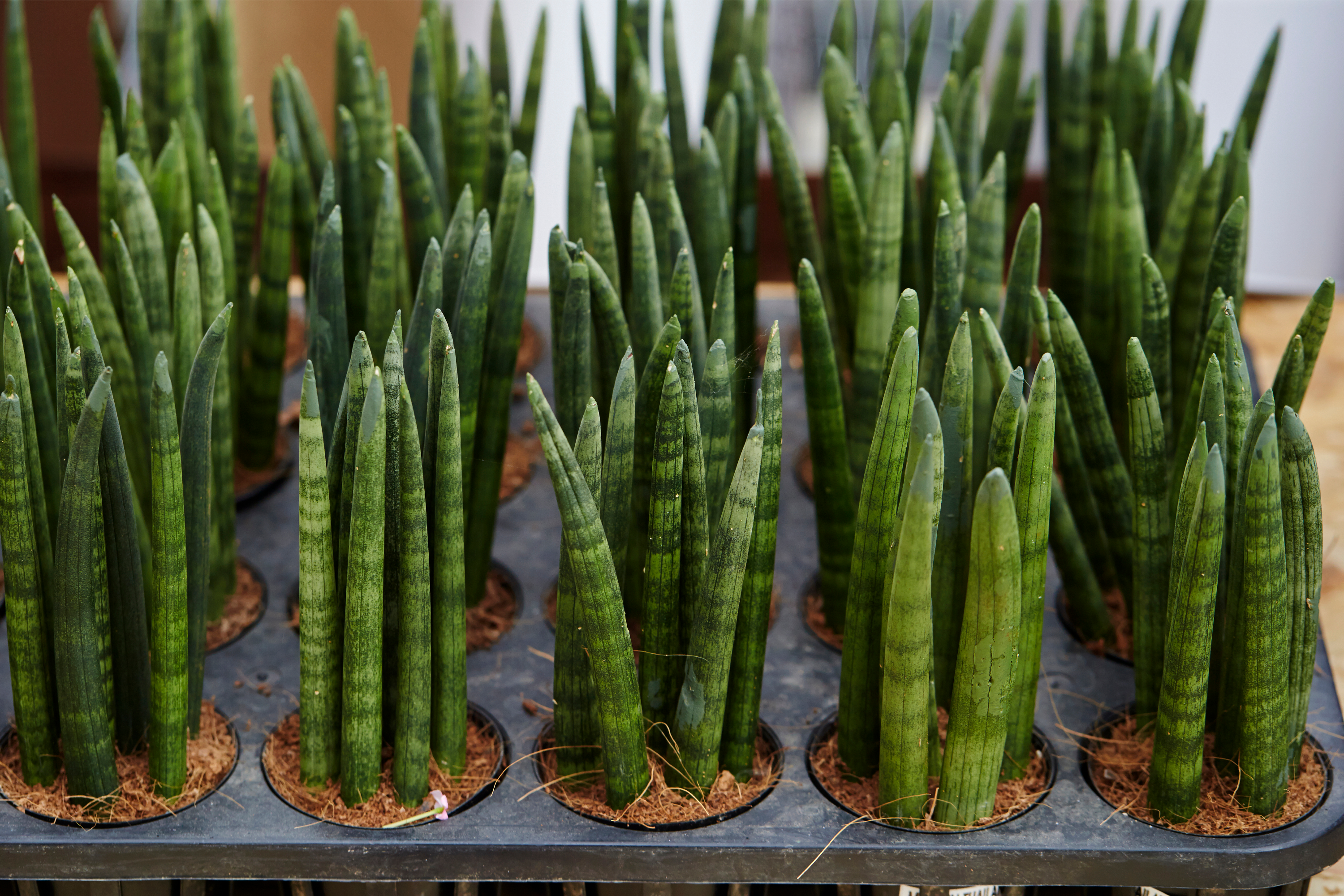Cylindrical snake plant
(Sansevieria cylindrica)

Description
Sansevieria cylindrica is a species of succulent plant belonging to the genus Sansevieria, which is a part of the Asparagaceae family. It is commonly known as the cylindrical snake plant, African spear plant, or sometimes, the spear sansevieria. The plant is native to West Africa, specifically Angola and the Congo region, where it grows in arid and semi-arid environments. Description Sansevieria cylindrica has long, upright, cylindrical leaves that grow from a basal rosette. The leaves are smooth and cylindrical, reaching up to 2-3 feet in height and 1-2 inches in diameter. The leaves are light to dark green in color with transverse bands of light green, gray-green, or silver-green, and pointed at the tip. The plant rarely flowers in indoor conditions, but when it does, it produces small, fragrant, greenish-white flowers on a thin stalk that emerges from the center of the rosette. Propagation Sansevieria cylindrica is a relatively easy plant to propagate, and it can be done through division or leaf cuttings. For division, the plant can be separated from the main plant by gently pulling or cutting the offsets away from the mother plant, ensuring that each section has some roots attached. For leaf cuttings, a healthy leaf can be cut into sections of around 2-3 inches in length, and each cutting can be planted in a well-draining soil mix, ensuring that the cut end is facing downwards. It is important to allow the cuttings or newly divided plants to dry for a day or two before planting them to prevent rotting. Light Sansevieria cylindrica thrives in bright, indirect light, but it can also tolerate low light conditions. In too much direct sunlight, the leaves can become bleached or scorched. The plant can also survive in low light conditions, but it may not grow as quickly or produce new leaves as frequently. The plant can be placed in a north-facing window or in a room with bright artificial light. Water Sansevieria cylindrica is a drought-tolerant plant that prefers well-draining soil and infrequent watering. The plant should be allowed to dry out between waterings, and overwatering can lead to root rot. The frequency of watering will depend on factors such as the temperature, humidity, and light conditions. During the winter months, the plant can be watered even less frequently. Soil Sansevieria cylindrica prefers a well-draining soil mix that is rich in organic matter. A good soil mix can be made by combining equal parts of peat moss, perlite, and sand. The plant can also be grown in a cactus or succulent soil mix. It is important to ensure that the pot has adequate drainage holes to prevent water from accumulating at the bottom. Temperature and Humidity Sansevieria cylindrica can tolerate a wide range of temperatures, but it prefers warm temperatures between 60-85°F. The plant can survive in temperatures as low as 50°F, but it may not grow as quickly. The plant is also tolerant of low humidity levels, but it can benefit from occasional misting or placing a humidifier near the plant. Fertilizer Sansevieria cylindrica does not require frequent fertilization, but it can benefit from occasional feeding during the growing season. A balanced, all-purpose fertilizer can be applied once a month at half the recommended strength. It is important to avoid over-fertilizing, as this can lead to salt buildup in the soil. Pests and Diseases Sansevieria cylindrica is a relatively pest-resistant plant, but it can still be susceptible to certain pests and diseases. Here are some of the common pests and diseases that can affect Sansevieria cylindrica: Pests: Spider mites: These tiny pests can be found on the undersides of leaves, and they can cause yellowing and browning of the leaves. Mealybugs: These insects can appear as white, cotton-like masses on the leaves, and they can cause stunted growth and yellowing of the leaves. Scale insects: These pests can appear as small bumps on the leaves and stems, and they can cause yellowing and browning of the leaves. Diseases: Root rot: Overwatering can lead to root rot, which is caused by fungi that attack the roots of the plant. Symptoms include wilting and yellowing of the leaves, and the plant may eventually die. Leaf spot: This disease is caused by fungi that attack the leaves of the plant, causing brown or black spots on the leaves. In severe cases, the leaves may fall off the plant. Stem rot: This disease is caused by fungi that attack the stem of the plant, causing it to become soft and mushy. In severe cases, the plant may wilt and die. Prevention and Treatment: To prevent pests and diseases, it is important to ensure that the plant is grown in well-draining soil, and that it is not overwatered. It is also important to inspect the plant regularly for signs of pests or disease, and to take action as soon as any issues are noticed. If pests or diseases are present, there are several treatment options available. For pests, the plant can be treated with insecticidal soap or neem oil, which are both effective at controlling spider mites, mealybugs, and scale insects. For diseases, it may be necessary to prune away affected leaves or stems, and to treat the plant with a fungicide. It is important to follow the instructions on the product label when applying any treatments to the plant.
Taxonomic tree:







